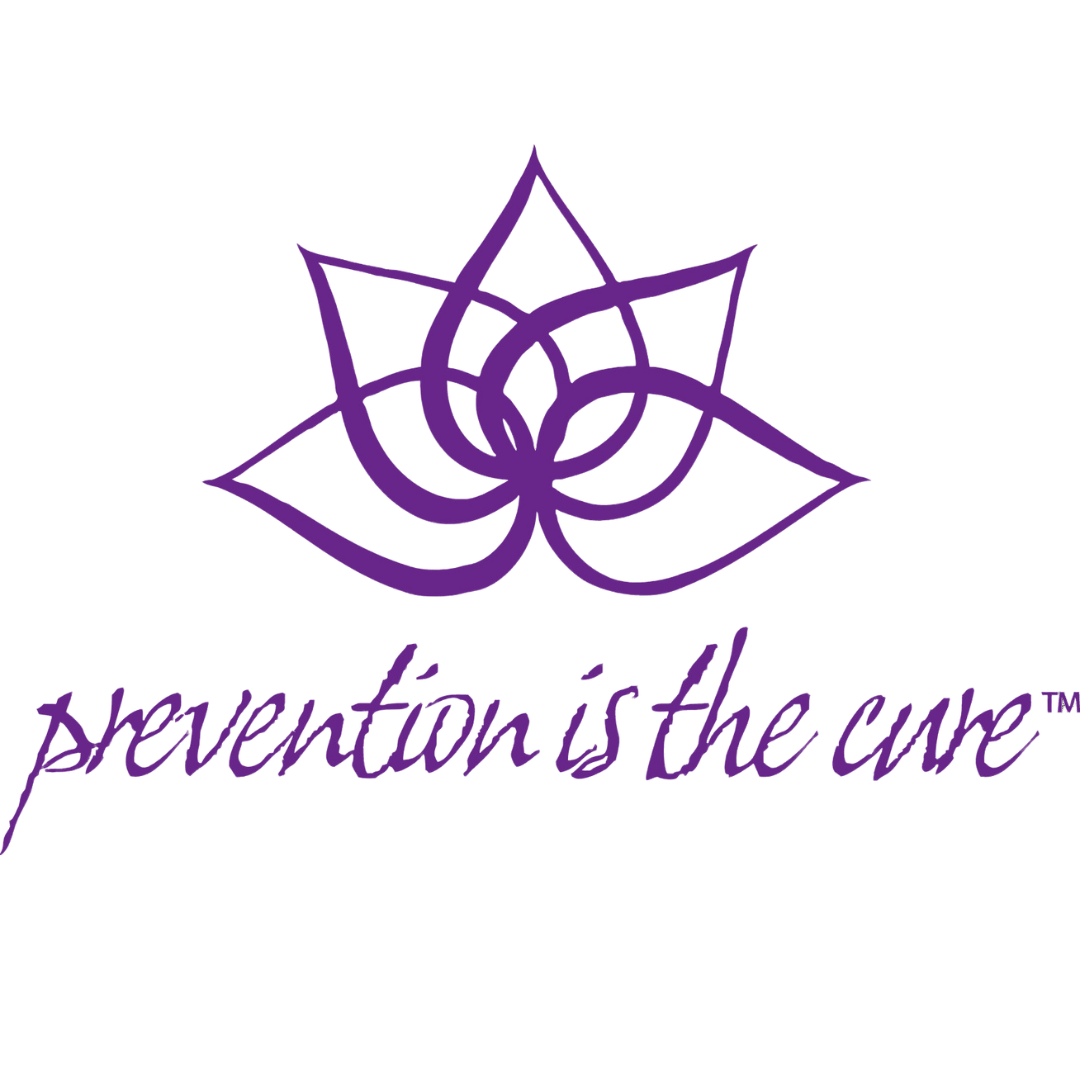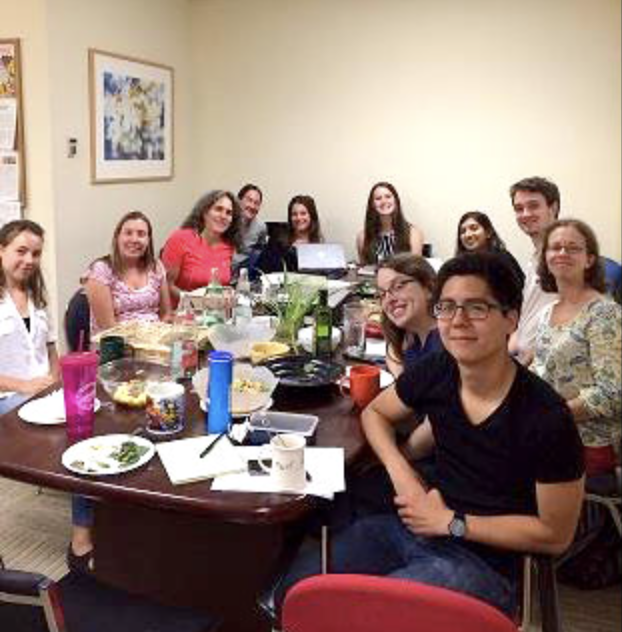2014
Knowles Presents Breast Cancer Research Findings
Featured in Huntington Headlines
Caitlin Knowles is well-known as a Huntington High School basketball player and as the Class of 2015’s recording secretary. She wears many other hats, too, and is one of the top scholars among nearly 300 juniors. But, did you know that the teenager engaged in breast cancer research and has presented her findings at several conferences?
Ms. Knowles applied for a spot in the Huntington Breast Cancer Action Coalition’s Students and Scientists environmental research scholarship program. “This program places high school students interested in environmental research with mentors studying the environmental causes of breast cancer in labs around the country for a summer internship,” the junior said.
HBCAC typically selects five or six students for the scholarship program, but a lack of funding limited the organization to just one award last year: Ms. Knowles. She spent four weeks last July working at the National Institute of Environmental Health Sciences in Research Triangle Park, North Carolina. “I learned a lot about breast cancer research and environmental toxicology,” she said.
When the internship concluded, Ms. Knowles took the data she collected with her mentors and presented it at the annual Breast Cancer and the Environment research program conference in Madison, Wisconsin last November.
“Most of the presenters were distinguished professional scientists in the field of breast cancer research, but there were a few high school students from Great Neck who attended as well,” Ms. Knowles said.
The Huntington teenager found her trip to Wisconsin to be quite worthwhile. “While I was there I was fascinated by both the complexity of the projects and the ease with which the researchers were able to explain their abstruse data to a mixed audience, ranging from professional researchers and postdoctoral fellows to graduate, undergraduate and high school students,” Ms. Knowles said. “This emphasis on communicating knowledge to the public inspired me to share what I had learned about the environment’s impact on health with students at Huntington High School.”
Ms. Knowles recently joined HBCAC President Karen Miller and the organization’s community communications director Kelsey Domino for a presentation on “Environmental Awareness: Identifying Endocrine Disruptors in Personal Care Products and the Health Risks That They Pose” to about 300 high school Living Environment, Earth Science and Chemistry students, as well as a business class studying environmental law.
“Although these presentations did not directly focus on my specific research project, the information I learned by working with HBCAC and interning at NIEHS was definitely applicable,” Ms. Knowles said. “The main message of these presentations is that there are substances in the environment that we are constantly exposed to that can cause major health issues, including breast cancer, obesity and diabetes. Often, we have no idea that we are exposed to these substances because they are hidden in personal care products (i.e. shampoo, soap, toothpaste, etc.) Most people do not read the labels when they purchase these products and they rely solely on the brand name or packaging to decide what they put into their bodies. Chemicals that should be avoided include parabens, phthalates, triclosan and bisphenol A.”
Students attending the presentation were shown photos of common personal care product brands and realized some of the items they were using contained chemicals and compounds that are harmful and could threaten their health.
“Although there are several agencies working to protect us from environmental toxins, among them the National Institutes of Health, National Institute of Environmental Health Sciences, FDA and EPA, the regulations are still insufficient,” Ms. Knowles said. “We need to be educated consumers to drive the market in favor of safe products by using our purchasing power. I think students really took this message to heart and will remember the negative health impacts associated with harmful substances in personal care products the next time they go shopping.”
Ms. Knowles said she is applying for another summer research this year through the National Institute of Environmental Health Sciences.
Summer Internship at Silent Spring Institute -
Newton, Massachusetts
Caitlin Knowles Junior, Huntington High School
This summer, I was given the incredible opportunity to spend two weeks working at Silent Spring Institute in Newton, Massachusetts. During my time as a Silent Spring intern, I got to work with Dr. Laurel Schaider and Kathryn Rodgers on projects concerning water quality.
The first week, I focused on compiling data from the EPA’s Unregulated Contaminant Monitoring Rule 3 (UCMR3). The EPA uses the UCMR3 to monitor the concentrations of drinking water contaminants that are not presently regulated but are likely to be regulated in the future. Public water systems across the country are randomly selected by size to take samples from each of their facilities, test for the required contaminants, and report their data back to the EPA. The selected contaminants are usually suspected of causing specific health effects. To keep concentrations at a safe level, the EPA will combine data from the UCMR3 and laboratory tests of health effects to establish a maximum contaminant level (MCL), the greatest concentration at which a contaminant can legally be present in drinking water, for each substance as a regulatory guideline.
My work with the UCMR3 was mainly focused on perfluorinated chemicals (PFCs) and several hormones. PFCs are chemicals with extremely strong bonds that are commonly used in airplane antifreeze solution, fire-fighting foams, nonstick pans, and stain-proof products. Due to their strong bonds, PFCs do not break down easily, so they persist in the environment for long periods of time. The presence of PFCs is concerning because they have been shown to have negative health impacts such as breast cancer, altered thyroid hormone levels, birth defects, and immune system problems. I looked at these specific contaminants to compare data the EPA had gathered on Cape Cod, in Massachusetts, and in the whole United States to previous experiments conducted by Silent Spring involving public and private wells on the Cape. After examining the data, it was clear that the percent of samples above the minimum reporting level (MRL), the lowest concentration at which a researcher can be certain the contaminant is present, was very small (less than 1%) for each contaminant and experimental area. For those samples that were above the MRL, samples from Cape Cod made up a disproportionally high percent of those from Massachusetts, and samples from Massachusetts were a sizeable percentage of all U.S. samples above the MRL. This information will help Silent Spring researchers put their own drinking water studies into a broader context and will be useful for understanding the sources of perfluorinated chemicals in drinking water in future studies.
I found the first week of compiling data engaging and interesting. The second week, I was given the task of creating Silent Spring’s eco-toilet video. Recently, Silent Spring has been conducting an eco-toilet sampling project, collecting water samples from the septic systems of several Cape Cod residents before and after they installed eco-toilets. Eco-toilets are designed to either divert urine from septic systems or compost waste, so there will likely be lower concentrations of hormones, pharmaceuticals, and consumer product chemicals in septic systems as a result. Dr. Schaider, Kathryn Rodgers, and Tara Krishna, another summer intern, had already recorded the sampling footage, so I was mainly in charge of editing and creating the final product. When the video was finished, I presented it along with my findings from the first week’s project to almost all of Silent Spring’s staff members.
My workdays were very interesting, and my time outside of work was equally as exciting. While in Massachusetts, I stayed at a very nice bed and breakfast in Newton, so I was able to go to many restaurants in the area for dinner after going for a run or exploring the town. I also got to visit several places in Boston, including the North End, Faneuil Hall, and five different colleges. I was invited to join in the annual Silent Spring staff retreat at Spectacle Island. Silent Spring is nearing its 20th anniversary, so it was extremely interesting to hear how far the Institute has come through the accounts of several veteran staff members. I am so glad to have been a part of Silent Spring, even if it was only for a short time. I truly had an amazing experience, and I am thankful to Silent Spring, Huntington High School, and the Huntington Breast Cancer Action Coalition, Inc. They made this internship possible! Hopefully I get the chance to come back in the future!
“My hosts at the Park Lane Bed and Breakfast.”
“Meeting with the scientists at the Silent Spring Institute.”
“Attending the Silent Spring Institute’s Annual Staff Retreat.”





